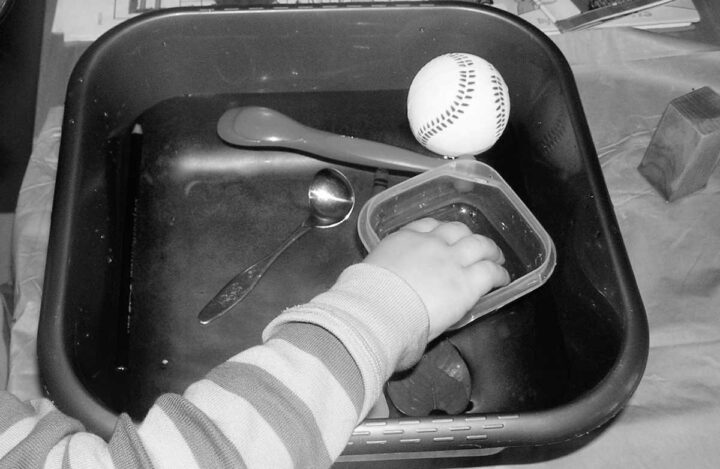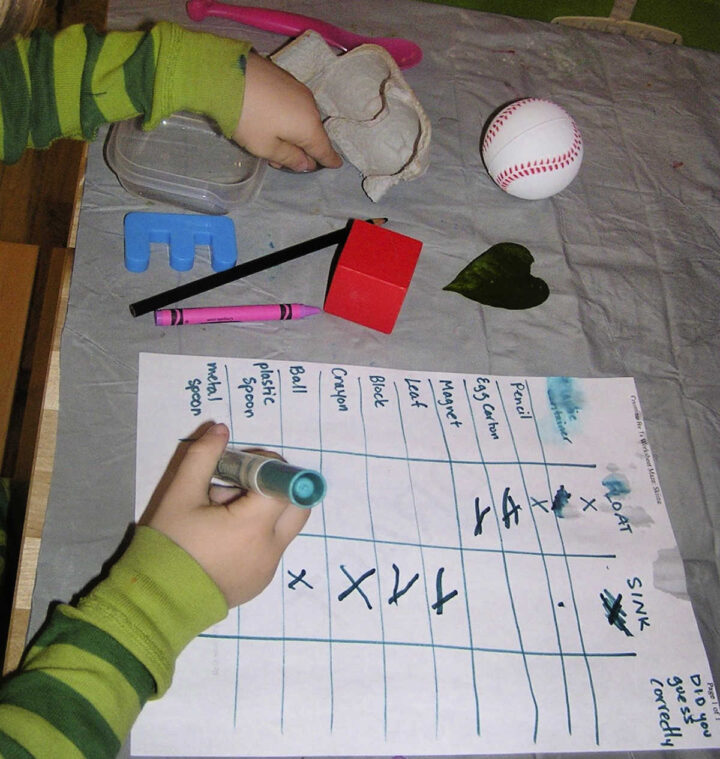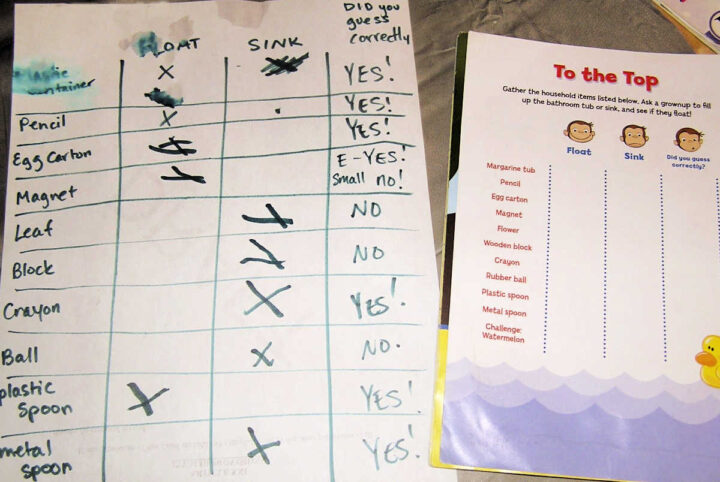"Will it float or sink?" That is the key question in this classic science experiment for kids. Kids from preschool age to tweens will enjoy this scientific investigation into how objects behave when they are dropped into a container of water.
The sink or float experiment encourages kids' natural curiosity and the simple instructions gives them room to explore ideas, and observe patterns. Kids make their own worksheet, and learn about how density plays a roll in whether an object sinks or float.
Sink or Float Materials
Water (obviously)
Large container. We recommend a container that allows for a large surface area, but use what you have on hand. You can even do this experiment in the bathtub.
Objects. Choose a variety of objects to test.
Optional: worksheet to record data and pen/pencil. We made our own worksheet.
Instructions
First, have your child collect objects from around the house and/or outside to test. They'll want to choose objects in a variety of sizes, shapes and weights.
Make sure some objects are light and flat, like a leaf. Others can be small and dense, or large and lightweight. Some can be hollow, others solid. You get the idea.
Next, fill the container with water.
Before adding the objects to the water, the child should predict if they think each item will sink or float.

One by one, drop the items into the water. If using a worksheet, record the data, placing an X in the correct column.
Our worksheet had four columns. Item - Float - Sink - Did you guess correctly? Your worksheet could also include columns for a description of the shape, weight and size of the object, as well as place to record their predictions.

Questions to Ask
Ask kids what patterns they observed as the continued to add object to the water. What characteristics did the objects have that floated? How about the items that sank?
How often did they guess correctly? When their guesses were wrong, why do they think they guessed the way they did?

Science Behind the Experiment
Objects are made up of molecules. Objects with tightly-packed molecules have a higher density than those with loosely-packed molecules.
Less dense objects have more buoyancy, which is the upward force exerted on objects.
Large objects, even if they are dense, may float if their surface area can displace enough water.
More Water Experiments
This sink or float discovery jar is a travel-friendly version of the classic science experiment, and great to hone scientific observation skills.
Simple homemade sailboats offer the opportunity to explore flotation, wind and water currents.
Watch an image magically transform before your very eyes with this water refraction experiment.
Learn about surface tension with water drop races, an alternative to the classic water drop on a penny experiment.
Finally, if your kids can't get enough water play, these 16 indoor water activities are helpful ideas to have on hand.
Updated 2023.




Lisa says
You're never too old for float and sink....great experiment and record keeping.